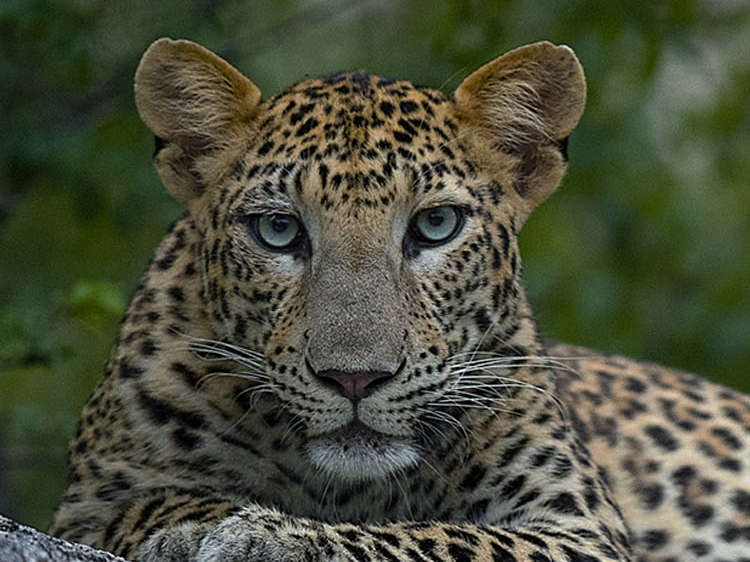My Unforgettable Jawai Leopard Safari Experience in Rajasthan
Jawai is a land where leopards roam freely among granite hills, and local Rabari herdsmen live in harmony.


If you’re someone who finds the usual wildlife safaris too crowded or commercial, then Jawai Leopard Safari might just be the offbeat adventure you're looking for. Tucked away in the rugged terrains of Rajasthan’s Pali district, Jawai is a land where leopards roam freely among granite hills, and local Rabari herdsmen live in harmony with these majestic predators. I recently explored this untouched wilderness, and it was nothing short of magical. Here’s everything you need to know if you’re planning your own trip to Jawai.
Where is Jawai and Why It’s Worth Visiting
Jawai, often called the "Land of Leopards," is located near the town of Bera in Rajasthan, around 130 km from Udaipur and 170 km from Jodhpur. What makes this place unique is the coexistence of leopards and humans, a phenomenon rarely seen elsewhere. Unlike national parks with defined borders and safari zones, Jawai’s leopards live in open, unfenced terrain dotted with volcanic granite hills, caves, and pastoral villages.
The sightings here are astonishingly frequent. Locals say it's easier to spot a leopard in Jawai than a tiger in Ranthambore—and honestly, they’re not wrong. I went on two safaris and was lucky to see three leopards, including a mother with her cub. The raw, untamed beauty of the place gives you the sense that you’ve stumbled upon a secret the world hasn’t caught onto yet.
The Best Time to Visit Jawai Leopard Safari
Timing is everything when it comes to wildlife experiences, and the best time to visit Jawai is from October to March. The weather is pleasant, and leopards are more active during the cooler months. I visited in early February, and the mornings were crisp but not biting cold—perfect for open jeep safaris.
Avoid the peak summer months (April to June), as the temperatures soar well above 40°C, making safaris quite uncomfortable. Monsoon (July to September) is also not ideal due to heavy rains and slippery terrains, which may limit access to certain hill tracks.
My Safari Experience: Thrills Amidst Silence
The safari experience in Jawai is unlike any I’ve had before. You won’t be entering through forest gates or standing in queues. Instead, you’ll hop into an open-top gypsy driven by local trackers who know these terrains like the back of their hands. My guide, a Rabari tribesman named Ramesh, could read pugmarks and subtle calls like poetry.
We started our morning safari around 5:30 AM, just as the sky blushed with the first light. As we climbed the granite hills, Ramesh pointed towards a distant cave with his binoculars. A leopardess was lounging gracefully on the rock, her cub tumbling nearby. We watched silently for almost 30 minutes, soaking in the moment as birds chirped and the sun rose behind her. No rush, no noise—just us, nature, and the thrill of the wild.
Each safari lasts around 2.5 to 3 hours, and there are usually two slots—morning and evening. I recommend doing both for different lighting and activity levels. Most resorts include the safaris in your package, but always double-check.
How to Reach Jawai and Where to Stay
Reaching Jawai is fairly convenient if you're coming from Udaipur, Jodhpur, or Mount Abu, which are all within a 3–4 hour drive. The nearest railway station is Jawai Bandh, connected to major cities like Jaipur and Ahmedabad. If you're flying, the closest airport is Udaipur (UDR).
Accommodation in Jawai ranges from luxury tented camps to eco-lodges and homestays. I stayed at a mid-range boutique camp that offered stunning views of the hills and personalized safari drives. Some popular names in the area include Jawai Leopard Camp, Bera Safari Lodge, and Welcome Heritage CheetahgarhResort. Book in advance during peak months as properties fill up quickly.
Other Attractions Around Jawai
While the leopard safari is the main draw, Jawai has other hidden gems worth exploring:
Jawai Dam: A massive reservoir where you can spot crocodiles, flamingos, and other migratory birds. A serene spot for sunset photography.
Rabari Villages: Spend time understanding the culture of the Rabari shepherds who have lived here for generations. Their harmony with nature is both humbling and inspiring.
Kambeshwar Mahadev Temple: A sacred shrine located amidst hills and caves, often visited by leopards too. Yes, you read that right.
If you have extra time, consider combining Jawai with a trip to Kumbhalgarh Fort, Mount Abu, or the charming town of Udaipur—all located within a 2–3 hour radius.
Practical Tips for Your Jawai Trip
1. Safari Clothing: Stick to earthy tones—greens, browns, and greys. Carry a light jacket for early mornings and evenings. Sunglasses and caps are useful during the day.
2. Booking: Most resorts arrange safaris with experienced trackers. Book your accommodation directly to ensure your safari slots are confirmed.
3. Safety: Jawai is extremely safe for travelers. The locals are warm, and the leopards, surprisingly, have never been known to attack humans here. Still, follow your guide’s instructions.
4. Budget: A decent 2N/3D stay with safaris and meals included will cost between ₹15,000 to ₹30,000 per person, depending on the level of luxury. It’s not dirt cheap but offers immense value for money given the exclusivity.
5. Connectivity: Mobile network is patchy, especially for data. Consider this a digital detox.
Final Thoughts: Why Jawai Should Be On Your Travel Bucket List
In a world where most safaris have become overrun by tourist vans and selfie sticks, Jawai offers an intimate, soul-stirring wildlife experience. It’s not just about spotting leopards—it’s about connecting with nature, observing the harmony between man and beast, and soaking in the untouched beauty of Rajasthan’s wilderness.
Leave a comment